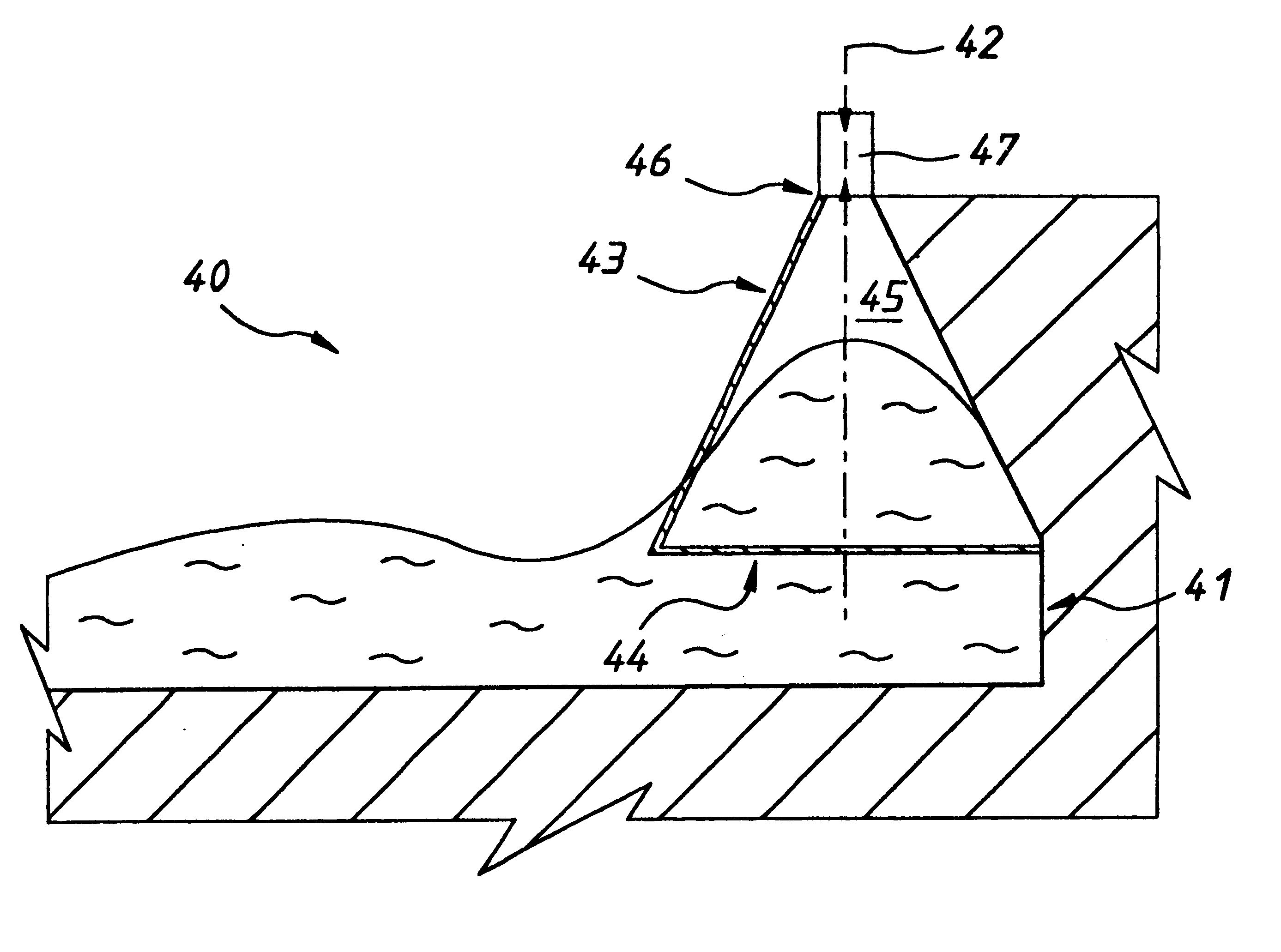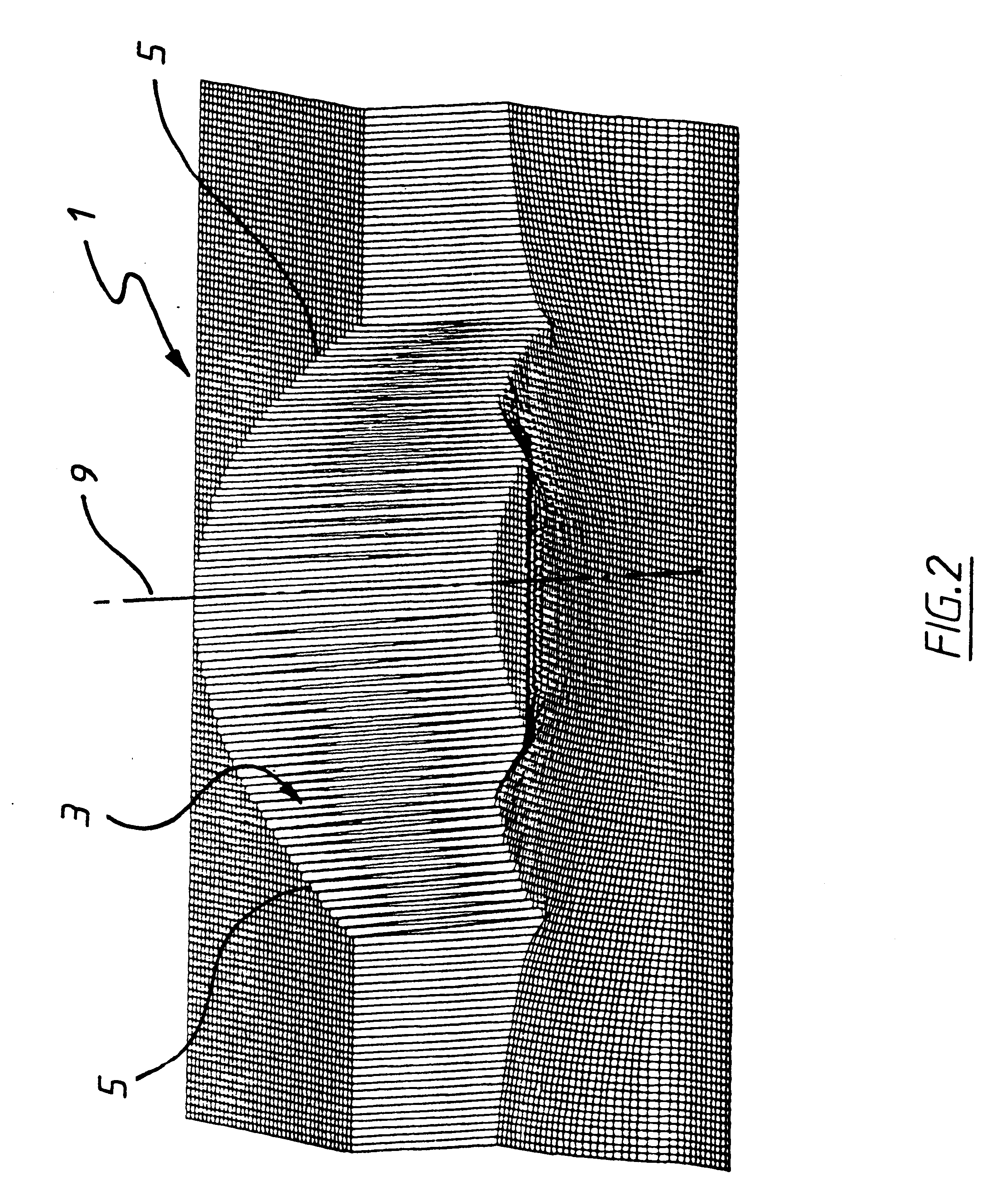An ocean wave energy extraction system and components thereof
a technology of energy extraction system and components, applied in the field of ocean wave energy extraction system, can solve the problems of affecting the energy conversion efficiency of paddle systems, the majority of wave powered generation systems proposed to date have not been physically practical and/or economically viable, and the cost of the system is high
- Summary
- Abstract
- Description
- Claims
- Application Information
AI Technical Summary
Benefits of technology
Problems solved by technology
Method used
Image
Examples
first embodiment
Referring firstly to FIG. 1, there is shown a first embodiment wave focusing structure in accordance with the first aspect of the invention denoted generally by reference numeral 1.
The structure 1 comprises an open sided bay 2 bounded by a generally upright sea wall 3. The wall 3 is concavely curved at its inner periphery 4 to define in plan two converging arms 5 of generally part parabolic curvature, wherein the respective axes of symmetry 6 and 7 of the paraboli from which the arms are derived are parallel. The arms 5 are joined adjacent their converging ends to form a shared apex 8. The wall 3 is oriented to admit an advancing wave front that is propagating in a direction generally parallel to the axes of symmetry 6 and 7.
FIG. 5 shows another variation on the structure illustrated in FIG. 1 which may be employed when it is too costly or not possible to construct the wall of the bay as either part of the surrounding coastline or having long parabolic arms extending out into the ba...
second embodiment
In use, the wave focusing structure is orientated as described, such that the plane wave advances toward the parabolic or part parabolic wall 3 in a direction generally parallel to the axis (or axes) of symmetry 6 and 7. On impact with the parabolic sections 5 of the wall 3, the wave is reflected to converge toward the corresponding focus 9 or foci 9 and 10 of each respective parabola. When the wall defines part of a single parabola as in the preferred second embodiment shown in FIGS. 2, 3 and 4, the wave converges toward the single focus 9 as a circular or polar wave. At this point, the displacement amplitude of the wave will have been significantly magnified, making it the perfect plan location at which to position suitable means for converting that sea water displacement to another more useable energy form. This is defined as the energy harnessing region shown generally at 12 which in FIG. 5 corresponds in location with air compression chamber 11. It will be appreciated that the ...
PUM
 Login to View More
Login to View More Abstract
Description
Claims
Application Information
 Login to View More
Login to View More - R&D
- Intellectual Property
- Life Sciences
- Materials
- Tech Scout
- Unparalleled Data Quality
- Higher Quality Content
- 60% Fewer Hallucinations
Browse by: Latest US Patents, China's latest patents, Technical Efficacy Thesaurus, Application Domain, Technology Topic, Popular Technical Reports.
© 2025 PatSnap. All rights reserved.Legal|Privacy policy|Modern Slavery Act Transparency Statement|Sitemap|About US| Contact US: help@patsnap.com



